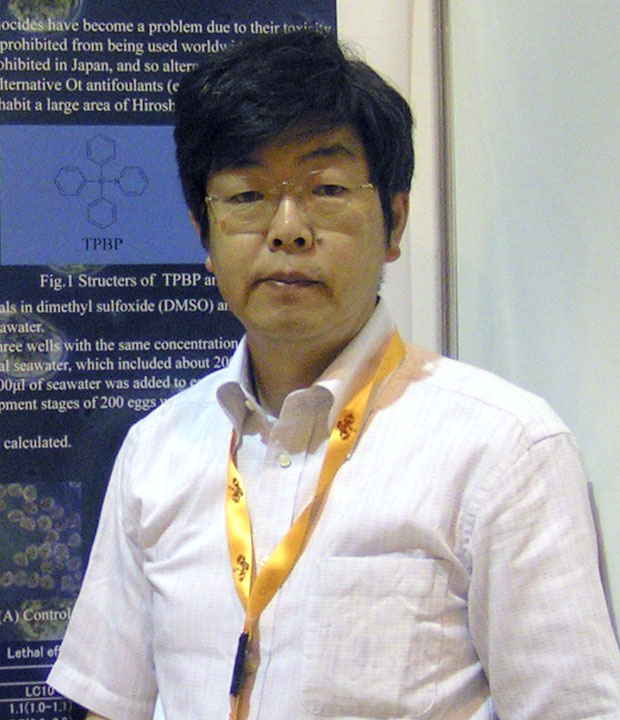
So far, we have conducted an environmental survey on the contamination of seawater and bottom sediment by chemical substances in Hiroshima Bay. We also conducted toxicity studies on the effects of chemical substances on marine organisms, and made presentations at international conferences such as SETAC (Society of Environmental Toxicology and Chemistry) and EMECS (Environmental Management of Enclosed Coastal Seas), as well as the Japan Society for Environmental Chemistry and the Japan Society on Water Environment.
However, it must be said that these activities alone are not sufficient to suppress the rise in seawater temperature that fundamentally affects the environment and living things.
The rise in CO2 concentration in the atmosphere, which is the cause of the rise in seawater temperature, is considered to be an urgent issue in conserving the global environment, so an NPO corporation was established.
Renting event spaces such as shopping malls, and hold panel exhibitions once a month.
There are many activities that you can do to prevent global warming.
Stop the idling of the car to reduce the consumption of fuel such as gasoline.
When purchasing a new car, select an eco car.
Replace household appliances that have been used for more than 10 years to reduce electricity consumption.
Suppress electricity consumption by turning off electricity in unused rooms.
For everyday shopping, bring eco-bags and do not receive shopping bags.
It is possible to reduce CO2 in the atmosphere more efficiently by processing the exhaust gas from the factory that emits CO2 having a higher concentration than in the atmosphere.

Reduce CO2 in the atmosphere by using technology that has been developed to remove CO2 directly from the atmosphere.
Science CO2 is removed directly from the atmosphere, we believe that the earth`s CO2 concentration can be reduced regardless of the installation location even in Japan.

Until now, we have conducted research on the environmental impact of Hiroshima Bay and the effects of ship-bottom paint substances on marine organisms. We will continue to conduct surveys and research to protect the marine environment.

Noritaka Tsunemasa
Japan Society for Environmental Chemistry
* If you would like to see other papers, Click "Reports".